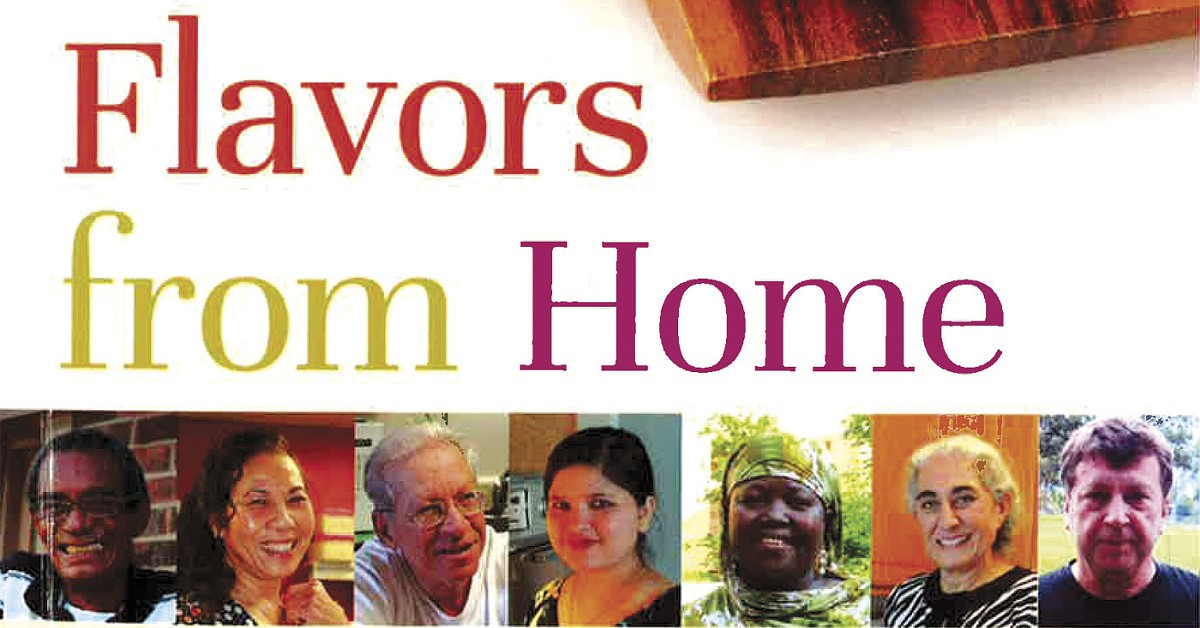Flavors from Home by Aimee Zaring (University Press of Kentucky; 280 pgs., $29.95)
Aimee Zaring, who’s taught English to refugees in Kentucky, has fashioned a fascinating concept, and she’s given it a beautifully appropriate structure. This is a story of how America, and Kentucky in particular, has become a sanctuary for individuals, couples, extended families and communities from many parts of the world — as seen through the filter of “comfort food.” There are differences but also similarities in how “home cookin’” from Bhutan, Democratic Republic of the Congo, Myanmar and Cuba are transposed to take advantage of what’s on the shelves at Kroger and Sam’s Club.
Each chapter begins with the story of how an individual came to Kentucky. It may include, or lead into, description of their experience with comfort foods (or, if they cook for a living, how they came to do this in home country or since they came to America); finally, we get two, three or four recipes adapted for local ingredients. Not that you wouldn’t have to do some searching to find some of the minor, or even major, ingredients here (e.g., when you want cassava leaf as the basis for a stew that also incorporates eggplant, peanut butter and sardines), but international groceries are now part of Kentucky’s commercial landscape.
Huong “CoCo” Tran, the Vietnamese woman behind a string of Louisville institutions starting with The Egg Roll Machine and Café Mimosa, is a natural for this book. But there are other restaurateurs who get chapters, as well as those who cook the recipes of their heritage only for social clubs and church congregations, or for curious acquaintances (and Zaring’s description of her experiences as a guest in various kitchens and dining rooms is often charming). The recipes are balanced among large and small main dishes, sides, salads and desserts.
Even a brilliant formula might eventually get a little stale, and as is the practice with cookbooks these days, sidebars become part of the fun here as well as a complementary learning experience. The author has done a fine job of selecting sidebar topics to maintain reader interest: official and unofficial concerns for refuge and resettlement (it isn’t just a Japanese trait to request that you remove your shoes before entering a home), as well as oddities of world cuisine (goat is the most-eaten red meat?).
There are black-and-white photos of families and “kitchen action shots” throughout the 23 chapters (in order by the refugee’s entry date). A small section of color photos brightens the book’s presentation of people (a gorgeous shot where a woman shows off her bounty from a communal garden) and dishes (contrasting, but equally delicious-looking, preparations of pork from Burmese and Azerbaijani kitchens).
If Zaring’s book comes a little shy of completely fulfilling the promise in its concept, the fault is tied to her generosity and excitement at bringing this to life on the pages. The steadying hand of stronger editing would’ve helped keep some sections from bouncing around with effusive chattiness, but don’t let that deter you from seeking out this book. It’s a unique celebration of community that’s appropriate for the bookshelves of adventurous foodies—and good neighbors.
Reading, Signing & Tasting
Wednesday, March 18
The Loft
107 Crescent Ave.
Free; 7:30







